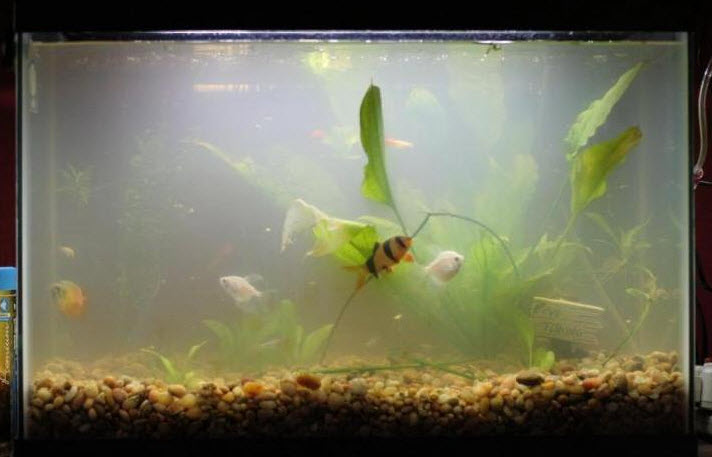
Cloudy Water in the Aquarium
Many people have their water turn cloudy, often looking like someone poured milk into the aquarium. Another term for this is a “bacterial bloom”. The term “bacterial bloom” is a bit of a misnomer. Initially it can be just bacteria clouding the water. But then over the course of a week or so it changes to a complex montage called “infusoria”. “Infusoria” is a collective term for minute aquatic creatures such as volvox, euglenoids, paramecium, rotifers, stentors, ciliates and other protozoa and metazoa that exist in virtually all bodies of water.
The way cloudy water forms is actually a line of sequential events:
- Food and feces release what are called “DOCs” (dissolved organic compounds) into the water.
- The DOCs feed bacteria in the water column which can give very high heterotrophic bacterial counts (in the hundreds of millions). Note the term “heterotrophic” simply means organisms which eat the same food humans do, namely carbohydrates, proteins and fats. These bacteria CAN cloud the water on their own (but one can have bacterial blooms without cloudy water). These bacteria CAN rarely be pathogenic bacteria (but the vast majority of the time it is NOT pathogenic bacteria).
- A huge number of minute creatures then feed on the bacteria over a span of days. These creatures then cloud the water or continue to cloud the water.
Tracking down and solving what is causing cloudy water requires some detective work and an elimination process. Just go down what is listed below and eliminate what isn’t present. What remains is generally pretty obvious.
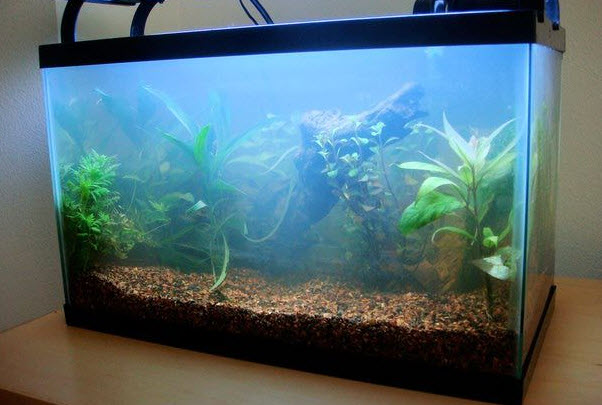
Reasons for the Bacterial Blooms
There are many possible reasons for “bacterial blooms”. Almost all of these reasons can be summarized by saying “there is not enough brown gunk in the filter”:
- The hobbyist has changed out the cartridge in a cartridge filled hang on back filter for a new one cartridge (VERY common as this is what the instructions say to do). This is one big scam and should NEVER be done. If the cartridge starts to fall apart replace it with foam inserts or pot scrubbers.
- The filter is less than 3 months old and hasn’t had time to form a large amount of “brown gunk”, i.e. the aquarium isn’t “mature”.
- The filter is a hang-on-back with insufficient surface area to form a lot of “brown gunk”
- The filter is a canister which is filled with an ineffective filter media such as Matrix, Biohome, ceramic rings, lava rock and/or bioballs with insufficient filter media surface area to form a lot of “brown gunk”.
- In our “cleanliness is next to godliness” world, everyone keeps cleaning away this “brown gunk” because it’s “obviously fish poop”.
- The hobbyist has changed out a filter completely and doesn’t realize the new filter needs to be cycled.
- The hobbyist is overfeeding, feeding more dry food that the size of two fish’s eyeballs once a day.
- Someone has poured excess food into the tank. Kids do this ALL the time.
- Antibiotics or other medication being put into the water and killing off the beneficial bacteria in the filter
- Inadequate aeration
- Too large a substrate, allowing food to drop into where the fish can’t eat it.
One good way to understand most bacterial blooms is to understand that there MUST be a collection of bacteria and organisms in an aquarium feeding on excess food and on fish waste. The question is does the hobbyist want the collection to be in the water column as a “bacterial bloom” or does the hobbyist want it to be in the filter as “brown gunk”. Most hobbyists want this collection to NOT be in the water column. This means it MUST be cultivated in the filter as “brown gunk”.
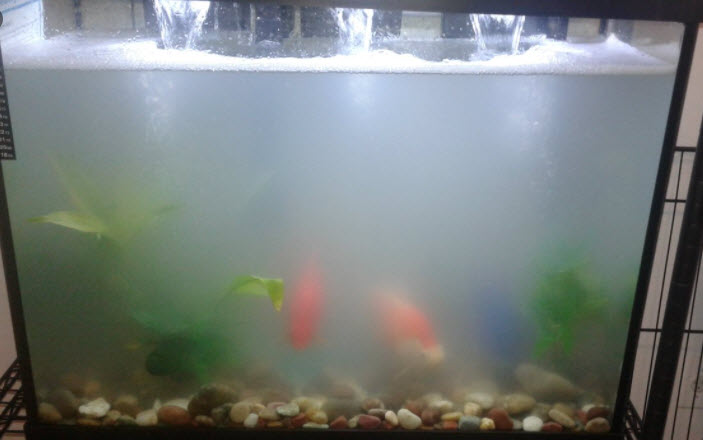
Looking at each of these reasons for a bacterial bloom and cloudy water in more depth is done in the following sections. This is rather boring and only for the real nerds among us like the author:
Cycling Tank Patience
The bacterial cloud is quite common during cycling a new aquarium and many “newbies” panic and start changing their water. Changing the water simply prolongs the agony. Changing the water removes the food and ammonia necessary for the filter to build up large amounts of brown gunk.
The newbie should just leave the tank alone, just continuing to add whatever feed they have decided on (food or ammonia). If fish are in the tank ammonia typically needs to be kept below 3 to 4 ppm but NOT below 2 ppm. There is some risk the bacterial bloom is pathogenic bacteria but with new tanks the risk seems to be rather low.
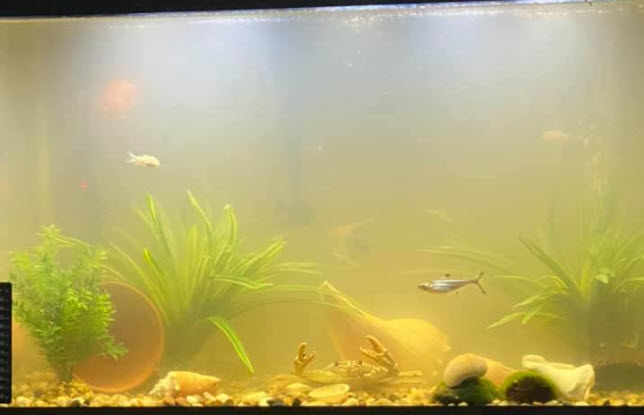
Leaving the aquarium alone allows the bacterial bloom to transfer from the water column to the filter media. The water will typically clear quite dramatically in a few weeks and all is well.
A mature filter (lots of “brown gunk”) has a whole host of organisms which both compete with and consume the organisms which form cloudy water. So the brown gunk in the filter is a double blow for crystal clear water. The key is timing. A bacterial bloom in the water can occur in hours (just overfeed a new tank some day). But building up the brown gunk in the filter takes weeks.
Here is a link to all the various aspects of the hundreds of ways to cycle a tank (note most of these methods are “fish-less” cycling):
2. Aquarium Cycling
Note that most of the time cloudy tanks have fish in them. This means that the cycling needs to be done carefully. There is a balance to be struck between feeding the beneficial bacteria ammonia and keeping the ammonia levels below 3 to 4 pm to prevent damage to the fish. This “fish-in” cycling is covered in depth in this link:
2.5. Fish-in Cycling
.
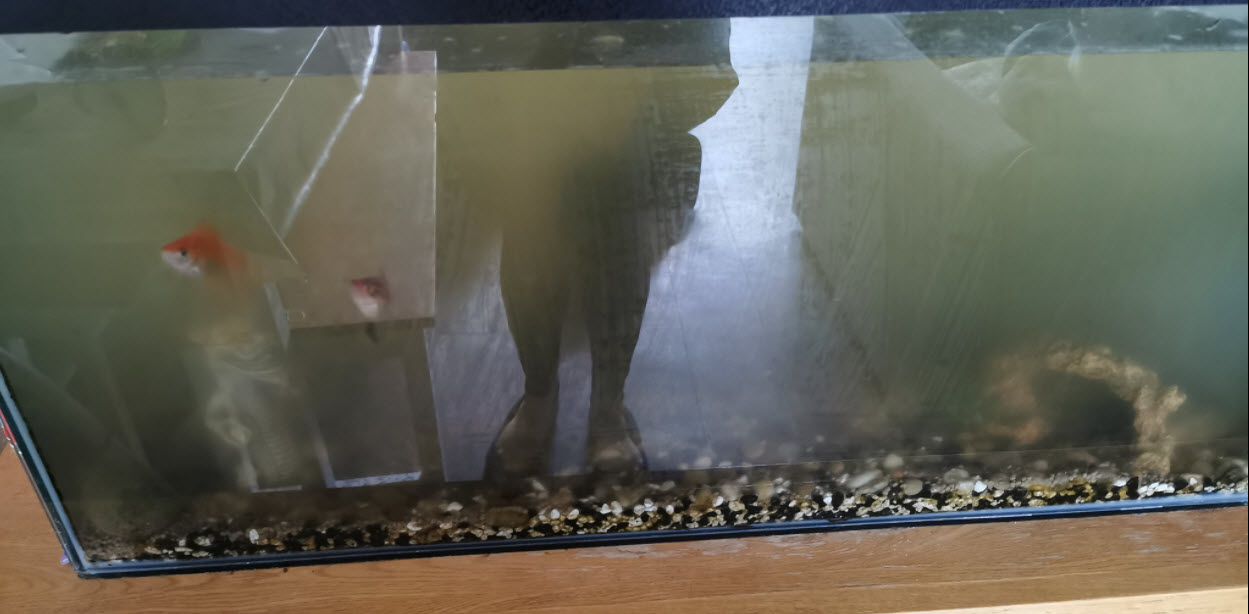
Hang-on-back Filters
Hang on back filters are probably the most common filter in the hobby. If one only has a few small fish they are fine. But add a lot of fish and there will be problems. Cloudy water is only one of those problems. There are several options for adding better biofiltration to a hang-on-back filter:
- If the hang-on-back is a cartridge and the cartridge is being changed or cleaned on week to month schedule there will literally be no biofiltration. One can “supercharge” the cartridge hang-on back filter by removing the cartridge and replacing it with foam blocks (Cory at Aquarium Co-op has an excellent video on how to do this and he stocks the foam blocks). Don’t clean the foam but lightly when the flow noticeably slows down. Here is a link to what to do :
8.2. Hang-on-back Filters
- Supercharge any hang-on-back filter, including bottom to top flow hang on back-filters, by simply removing everything and replacing with ONLY plastic pot scrubbers.
- Add a small canister filter filled with sponge like the Sunsun HW-603B External Canister Filter ($40). 80 cubic inches foam.
- Add a powerhead operated under-gravel filter. And yes, under-gravel filters are poor filters IF THEY ARE REGULARLY CLEANED. If one just leaves them alone for years at a time they are great filters. Here is a link to an in-depth analysis of under-gravel filters:
8.5. Under-gravel Filters
- Add a powerhead operated sponge filter. Here is a link to sponge operated filters:
8.4. Sponge Filters
.
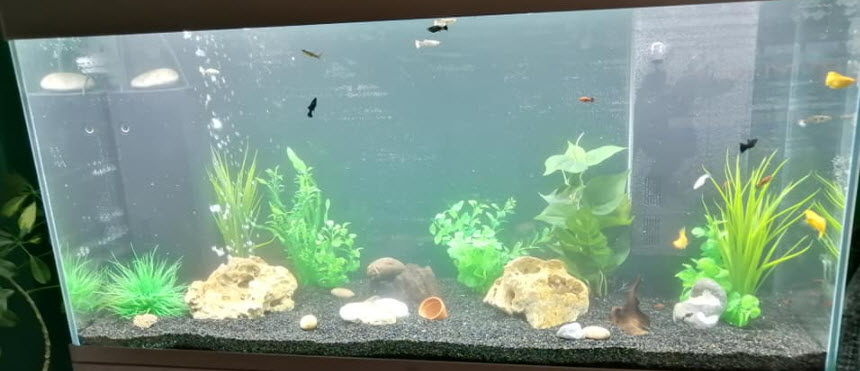
Poorly Filled Canister Filter
If you have a canister but it is filled with the media that came with it, like bioballs, Matrix, Biohome, and/or ceramic rings, it is a poor biofilter. One needs to change the media to something like foam, pot scrubbers or static K1 media. These media have much more surface area and have been proven by actual testing to give much better ammonia oxidation than the “normal” media. Here is a link to more about this topic:
7.1.3. Test of Filter Media
.
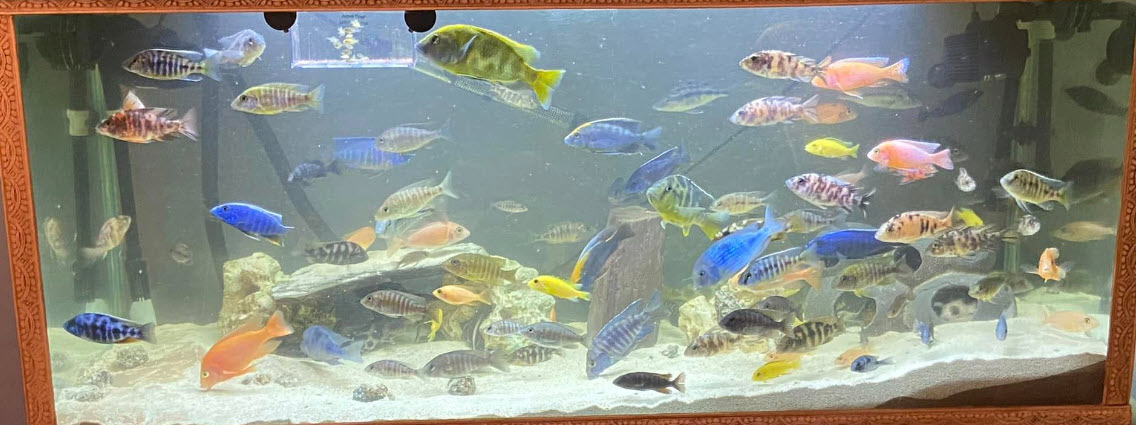
Over Cleaning the Filter
If you are cleaning your biofilter media more than once every four months to a year, you need to stop. The brown gunk in the filter is good beneficial bacteria and shouldn’t be cleaned until the flow through it slows down. Actual testing of a sponge filter confirmed that a thorough cleaning is a very bad thing to do to a filter. Click on the following link for some interesting test data:
6.8. Thorough Cleaning
When one cleans any filter media it is important to only lightly clean it and to NEVER clean it under running water. One or two swishes back and forth in a tub of water is all that should be done. Note testing found that the water in the tub can be chlorinated tap water. The amount of chlorine present is too small to do any damage to the beneficial bacteria.
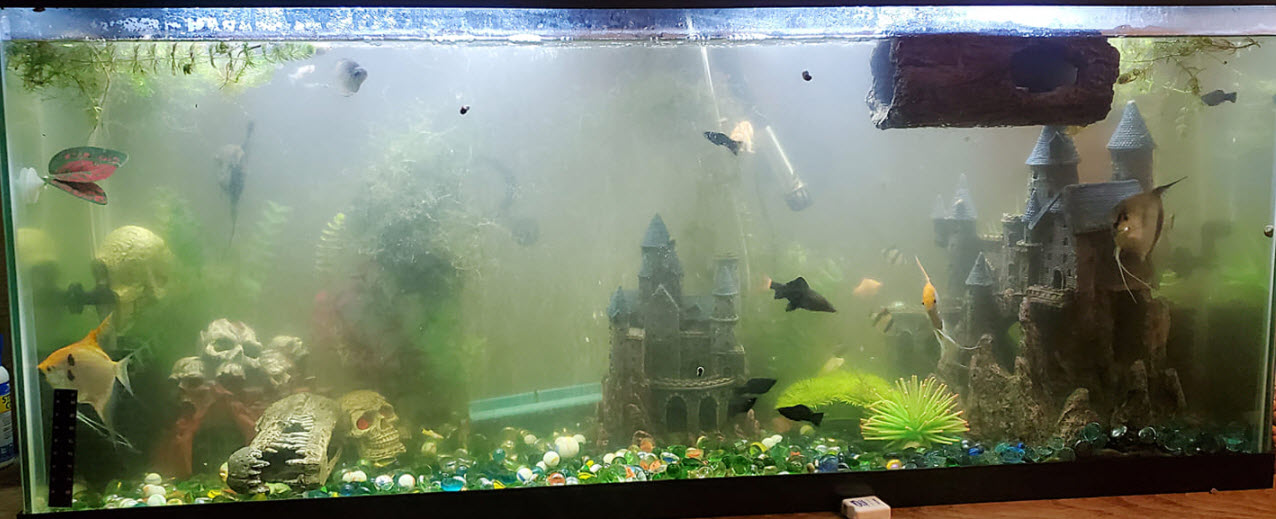
Replacing an Old Filter with a New Filter
There is a common misconception that hobbyists cycle an aquarium, not the filter. The idea is that the substrate and decorations have sufficient beneficial bacteria to keep the nitrogen cycle going even though one has replaced an old filter with a new filter and new media. This idea is simply incorrect.
The amount of beneficial bacteria in a typical aquarium found on the substrate, rocks and decorations is small compared to what is in a good filter. Beneficial bacteria require TWO things to grow, a surface AND a type of high velocity water flow called “turbulent flow”. On the decorations and substrate in aquariums the beneficial bacteria have a surface. They do not have a high velocity water flow unless a wavemaker is aimed at the substrate. This means that there are very few beneficial bacteria on decorations and in the substrate in most aquariums.
So everyone is cycling their FILTERS, not their aquariums. So a new filter needs to be cycled. Since most of tanks with new filters on them have fish in them they need to be cycled with “fish-in” cycling techniques. Here is a link to that topic
2.5. Fish in Cycling
Note that “cloudy water” covers a condition I call “dull” water. The water just isn’t “crystal clear”. This is typically not healthy for the fish. Here is a fine example of such a “dull” aquarium:
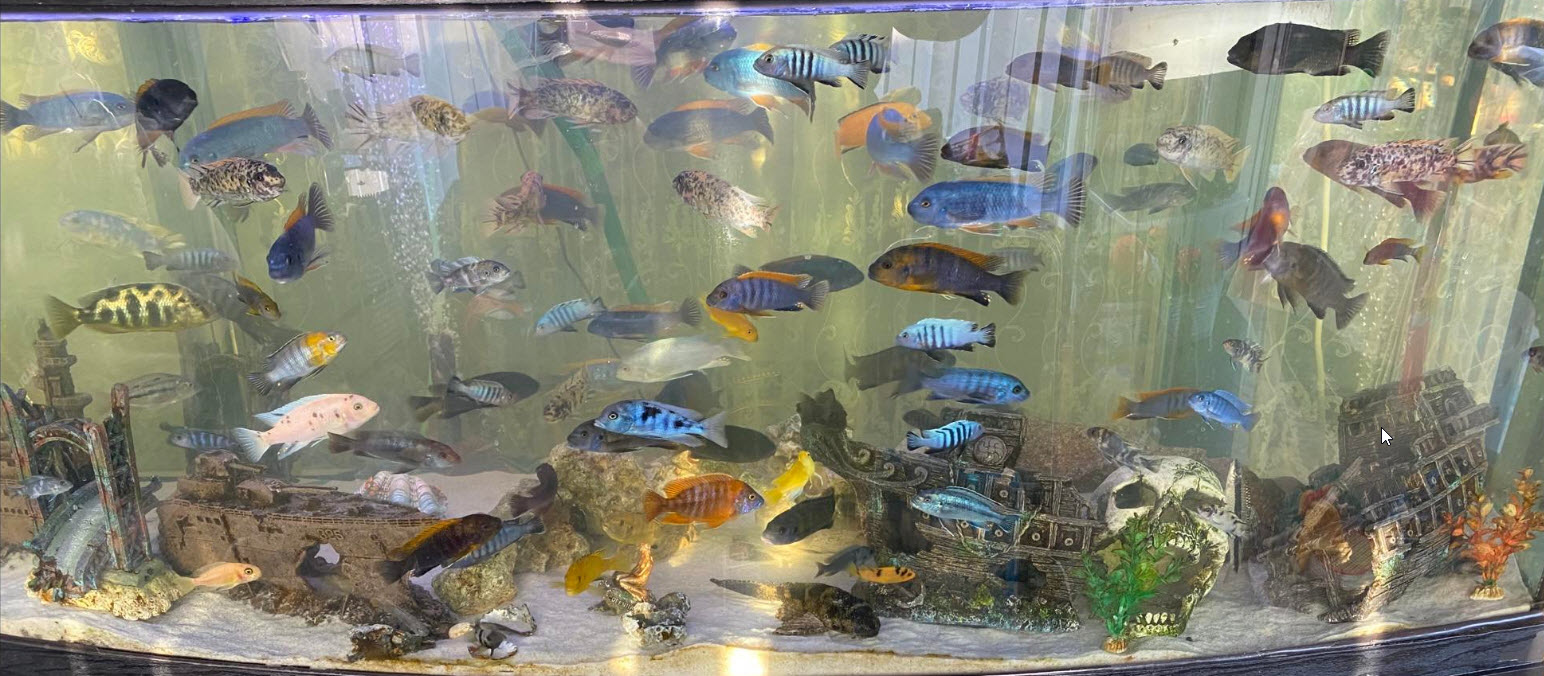
.
Overfeeding
If one feeds more food than the surface area of the media in the filter can process then cloudy water will result. Fish should be fed about 1% of their body weight per day in dry commercial fish food. That is not a lot of food. This topic is delved into in more depth in this article:
3.3. Amount of Fish Food
.
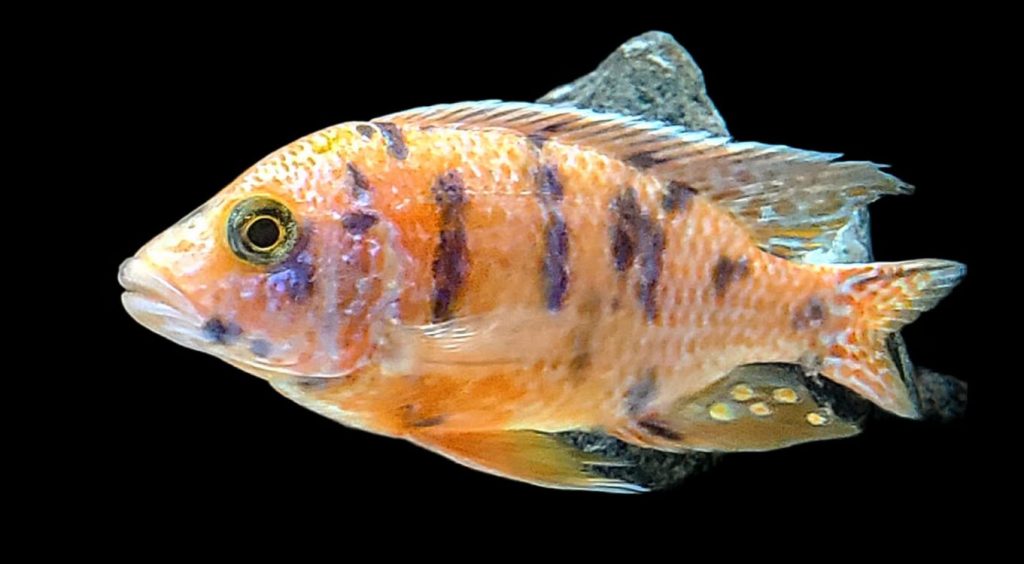
Food dumped into the Tank
There are two very common scenarios which come up on social media. The first is where a kid has dumped food into the aquarium. This is VERY common and a surprising number of parents come on social media with “My three year old says he didn’t put any food into the tank and I believe him“. Isn’t denial great?
The second scenario is where someone has gone on vacation and the “fish sitter” has put in way too much food. I NEVER use any fish sitter. I just leave the fish without food. It is a lot safer. I’ve left fish without food for two weeks with no problems.
These scenarios kill fish unless large scale water changes are done, like 95%. Excess food and the dissolved organic compounds (DOCs) the food produces is fed on by tons of bacteria. That bacteria produces toxins which will kill the fish. And sometimes the bacteria are pathogenic and overwhelm the immune systems of the fish, killing them. One must get the food and DOCs out of the aquarium as quickly as possible. Do several 90% to 100% water changes. If a house fill with carbon monoxide we do not gradually take the people out of the house over a period of days. I have done lots of 95% water changes over the fifty years I’ve been in the hobby and never lost a fish.
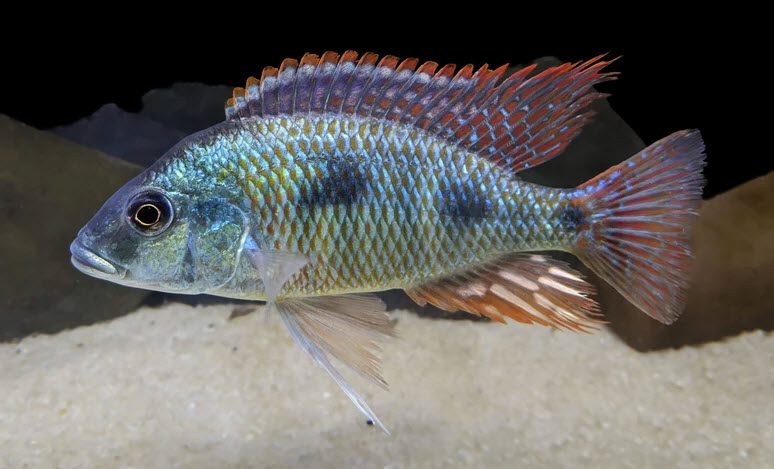
Inadequate Aeration
If the “brown gunk” in a filter doesn’t have a flow of well aerated water the beneficial bacteria in the filter often don’t grow well and cloudy water can result. So all tanks with decent amounts of fish in them need some good aeration.
For good aeration one needs to have turbulent surface flow of water, namely “choppy waves” or “breaking the surface tension”. Bubbles rising through the water also give turbulent flow and excellent aeration (confirmed by testing and contrary to popular mythology). So EITHER a lot of surface agitation or a lot of bubbles from a decent sized air pump do a good job of aeration. Go to this link for a more complete explanation:
9. 1. Summary of Aeration
‘
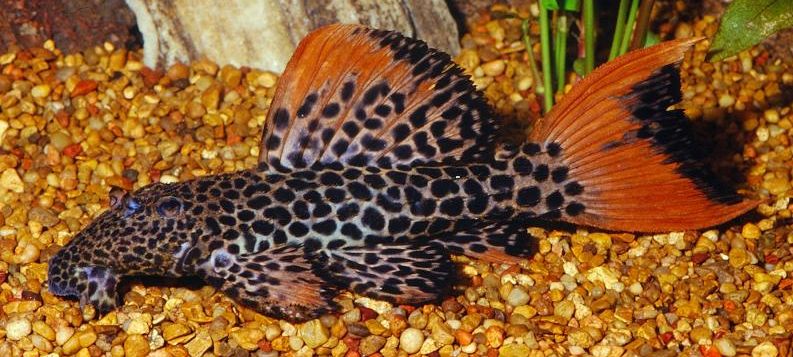
Too Large of a Substrate
Large pebbles and the like do not make good substrates for an aquarium. The food can get lodged down in the substrate where the fish can’t get to it. This uneaten food will produce large amounts of dissolved organic compounds (DOCs). These dissolved organic compounds feed the bacterial bloom in the water column. If there is inadequate filtration the problem is compounded.
Temporary Cloudy Water After a Water Change
It is quite common to get cloudy water after a water change. This cloudiness appears after an hour or so of the water change. Then it disappears overnight. This cloudiness is dissolved air which comes out after the water comes out of the tap, creating microscopic micro bubbles which appear as cloudiness. The micro bubbles of air then dissipates overnight and all is well. Tap water is normally under 30 to 80 psi pressure so pockets of air in the pipes dissolve easily into the water. It is harmless but confusing.
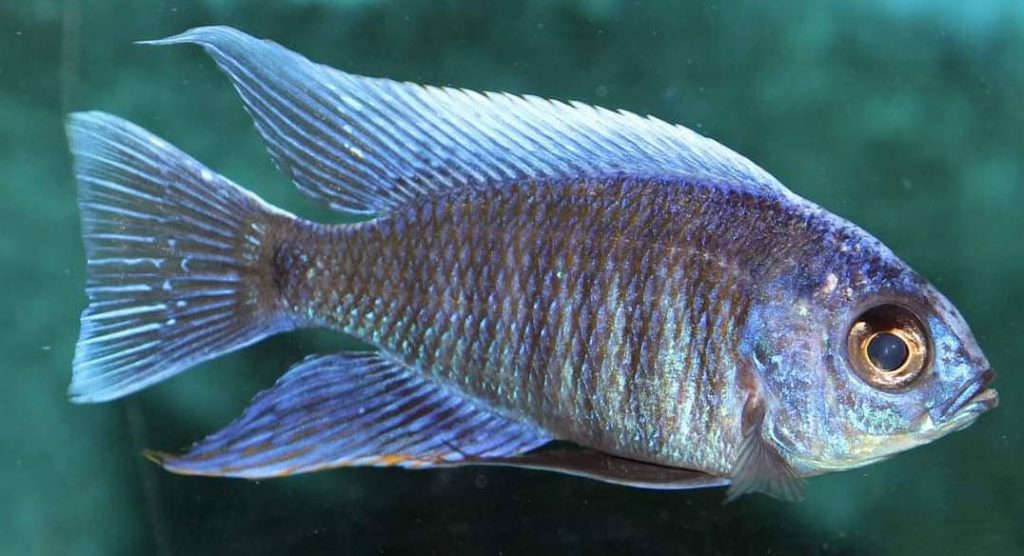
UV Sterilization as a Remedy for Cloudy Water
UV will definitely clear up cloudy water, often overnight. But the underlying problem will remain. Since the various factors which contribute to cloudy water are not addressed by using UV, it is a Band aide at best. So we do not recommend using UV to solve cloudy water. But UV sterilization is a great add on to any aquarium and we definitely recommend it for all aquariums. Here is a link explaining UV sterilization
14.1. UV Sterilization
.
Polishing Filtration as a Remedy for Cloudy water
Still another remedy for cloudy water is something called “polishing filtration”, putting Polyfil or Pinkie pads in the filter to trap the small particles and filter them out. This has some problems. A well packed basket of Polyfil will slow down the flow through a canister filter. The Polyfil (or Pinkie pads) will need to be cleaned or replaced on the order of every three to ten days (depending on the stocking). I’m lazy so I don’t have any polishing filtration in any of my tanks. But more on the topic can be found at this link:
6.4.2. Polishing Filtration
.
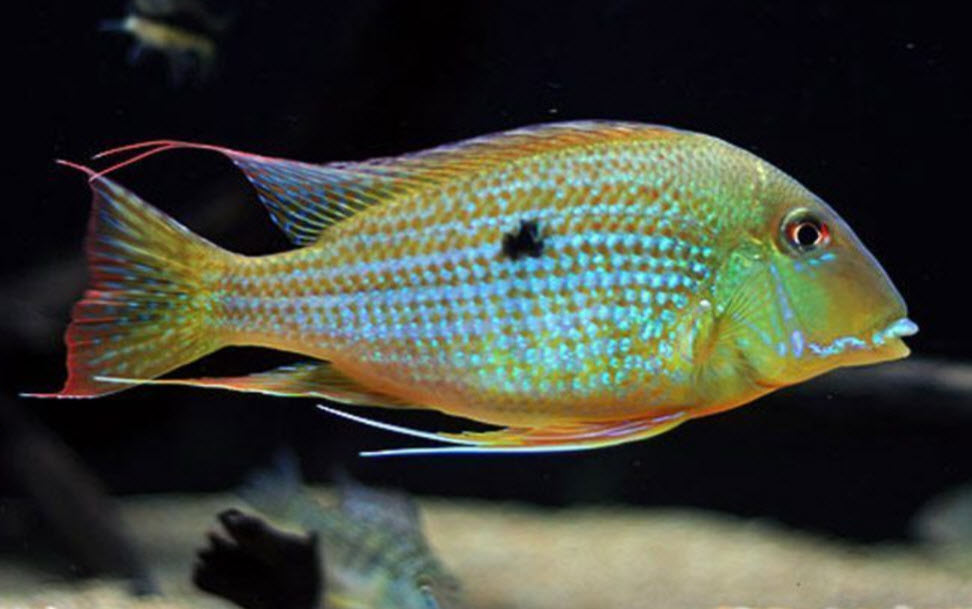
Purigen is Ineffective for Cloudy Water
Another remedy for cloudy water often cited in social media is to add a bag of very expensive Seachem Purigen to the filter. This simply doesn’t work. It was tested and Purigen failed the test with flying colors. Here is a link to the test:
7.4.6. Purigen
Myths
There is only one “myth” I’ve seen about “bacterial blooms”. This myth recently popped up on a YouTube video where a moderator had done a “large amount of research” and concluded that the bacteria in the water column in a bacterial bloom are “beneficial bacteria” in the water column feeding on ammonia and nitrite. Supposedly these “beneficial bacteria” then clump together, deposit themselves in the filter, and are thus good for an aquarium.
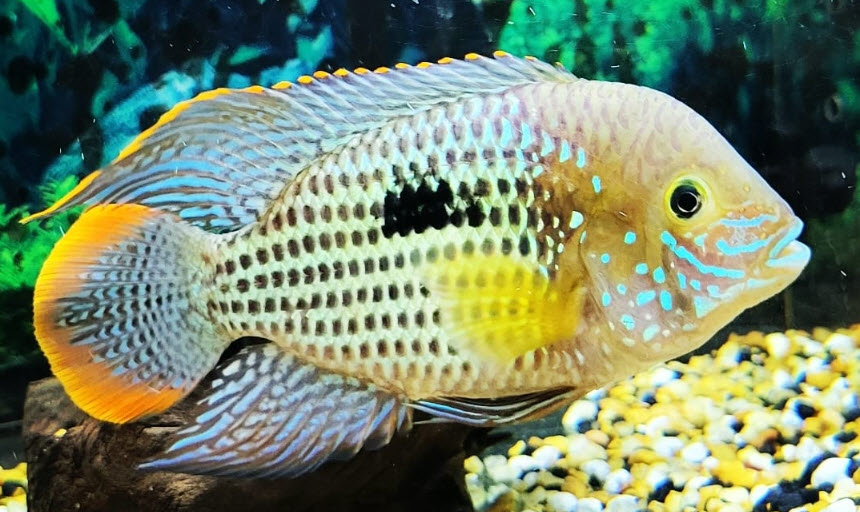
As noted above the root cause of bacterial blooms are dissolved organic compounds which feed what are called “heterotrophic” bacteria. “Heterotrophic” is simply a term which means “feeds on normal food”, namely carbohydrates and proteins. The “beneficial bacteria” that oxidize ammonia are “autotrophic” bacteria which feed on ammonia and nitrite. Beneficial nitrifying bacteria REQUIRE a surface in order to reproduce. They can live but they cannot reproduce in the water column.
The reason behind this is that carbohydrates and proteins provide large amount of energy to an organism, on the order of four calories per gram. So even small amounts of dissolved organic compounds can fuel a heterotrophic bacterial bloom in the water column which, in turn, feeds a bloom of infusoria.
But ammonia and nitrite only provide tiny amounts of energy to an organism, on the order of a hundredth of a calorie per gram. So an autotrophic organism which can only feed on ammonia and nitrite needs to be exposed on a surface where there is a high flow of water over the surface in order to get the energy needed to reproduce and multiply. So “bacterial blooms” in the water column are NOT autotrophic “beneficial bacteria”. And by definition heterotrophic bacteria in the water column are not “beneficial bacteria”. Heterotrophic bacteria by definition are only beneficial when they are attached to a surface.
.
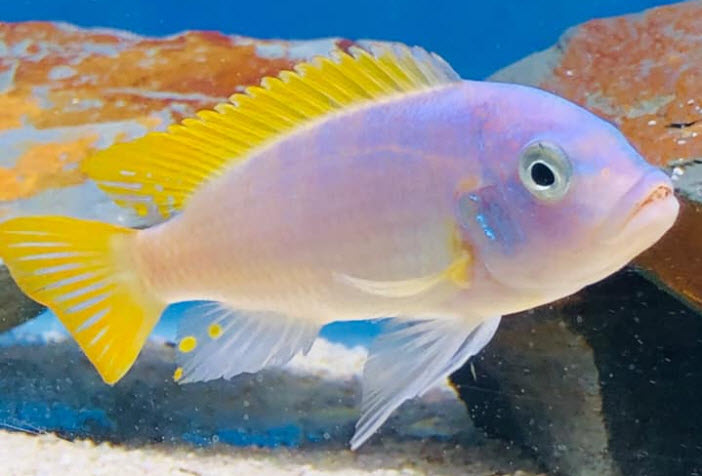
.
Getting Crystal Clear Water
Some people want that nirvana of fish keepers called “crystal-clear” water. That nirvana is best achieved by what is termed “over filtration”. Here is a link to how to obtain crystal clear water:
6.4. Crystal Clear Water
.
Return to Filtration Menu
.
Aquarium Science Website
The chapters shown below or on the right side in maroon lead to close to 400 articles on all aspects of keeping a freshwater aquarium. These articles have NO links to profit making sites and are thus unbiased in their recommendations, unlike all the for-profit sites you will find with Google. Bookmark and browse!
.

Dave says
In reply to Kevin …. You can top off with tap water at any time. It affects nothing.
Kevin says
Hi Dave,
Thank you for the reply.now I noticed my water change into yellowish/brownish color with the milkiness reduced by huge amount.
Also, can top off my tank with water? For 1 month of no water change my water level is already reduced by around 3 inches. And its making the water splash from spray bar too noisy. Thanks in advance.
Dave says
In reply to Kevin …. Just give it a few more weeks but cut your feeding by two thirds.
Kevin says
Hi Dave. I’m a huge believer in your works and would want to follow your advice thoroughly.
However just like you mentioned in your articles, as I newbie I am already sold by my local fish store with tanks already having fish in it. And now I have a 37-gallon tank with 2 adult angel fish, 4 adult mollies, 2 adult platys, 4 german blue rams and 6 juvenile corydoras with 4 angel fish fry and 3 juvenile mollies.
I happen to read your articles when I have just moved my community fish into the new 37 gallon tank from small several tanks before. I started running the 37-gallon tank on Feb 20, 2024.
Now I since then removed the few plants inside, installed new canister filter the small type 9W that is filled inside with mix of 20-30ppi foams (not fully filled, I just put 1 layer of foam per each tray as I ran out of foam). I also have 2 running sponge filters (4-5 inch height) and added 1 fluidized bed reactor filled with K1 media but air driven.
Now I know I need to improve more on my filtration, and I already ordered the materials (and also planning to do 1 big sponge filter via your rapid cycling method).
However as of the moment (Mar 22, 2024) with 31 days of my tank running with no water changes and moderate-to-plenty feeding of 45-48% protein foods and by moderate I mean 5-6 pellets per fish once a day -> I am consistently having 0 ammonia and 0 nitrate.
My initial pH was at 6.5 ph. Then I followed your advice and put some baking soda and raised the pH to 7.2 pH.
The problem is my tank is having too much cloudiness almost 90% milkiness with consistently 0 ammonia and 0 nitrate daily. Some white algae are forming on the glass walls and some brown gunk and on one sponge filter. My aeration is good. Lot of turbulence and almost the whole water surface area has turbulent flows in it.
I am worried my tank would never cycle and fits the criteria of your “sick tank syndrome” article. Do I just continue running the tank as it is or do I need to do some changes? Thank you in advance.
Dave says
In reply to anonymous …. Bothe the permanganate and the bottled bacteria are just wastes of money. The way to control bacteria and pathogens is by adding tons of biofiltration which is rarely cleaned,
Anonymous says
Hi I am a newbie fancy goldfish keeper from Indonesia. The words around here from a goldfish groomer is to weekly dose Potassium permanganate 1gr/1000lt to control the bacteria and pathogens population. Usually I would follow up by dosing powdered/bottled nictrobacter and nitromonas. Just want to know your thought on this ? Would the beneficial brown gunk be completely or partially destroyed when exposed to Potassium Permanganate 1gr/1000lt?
Anonymous says
the relevant section in the book was discussing how bacteria in the water column form a floc (like in the activated sludge process), followed by attachment to a surface as biofilm. so the “clump together” part of the myth is actually plausible per that author. and nitrifying bacteria can, in theory, live and grow on the flocs suspended in the water (like in activated sludge processes). of course, the book was about wastewater treatment, which has very different nutrient loadings, so it may or may not apply to the aquarium in this case. Still… this line of reasoning is a very good explanation for how a cloudy tank can drastically clear overnight once the filter is “mature”.
but yes, youre right that bacteria in the water column are not “beneficial” by definition.
regarding another myth that you pointed out regarding “young and old” bacteria… it appears from another of the many wastewater treatment books I’ve been reading that (at least some of) the known nitrite oxidisers reproduce by budding, not fission. In principle, the mother cell would be “older” than its daughter cells.
more broadly speaking, the wastewater industry does use the terms “old” and “young/new” with regards to biofilms and sloughing. as well as how the bacteria on the “younger” films generally have slightly more nutrient oxidising capacity as they’re in an active growth phase.
Dave says
In reply to anonymous ….. I changed the wording to clarify:
So “bacterial blooms” in the water column are NOT autotrophic “beneficial bacteria”. And by definition heterotrophic bacteria in the water column are not “beneficial bacteria”. Heterotrophic bacteria by definition are only beneficial when they are attached to a surface.
Anonymous says
Dave:
regarding the “myth” of bacterial blooms… from the book “fixed film development in wastewater treatment”:
ndividual bacterial cells can sense the density of other bacteria around it, and when a threshold number (or quorum) is present, they are then able to work together via a wide range of physico-chemical and biological processes to form a biofilm or other structure such as a floc. Quorum sensing appears to be a continuous process where individual bacteria produce signaling molecules or autoinducers that diffuse through the cellular membrane into the liquid phase. So, the higher the density of bacteria in an area, the higher the concentration of autoinducer molecules released, which eventually triggers a collec- tive behavioral change in all the bacteria. The secreted autoinducers are a mixture of homoserine lactones and specific peptides that con- trol specific repressor or activator sequences in the bacterial DNA
responsible for the production of mRNA. This forms a new protein
that includes among others, the genes for the formation of biofilm. Where this gene is absent an organized biofilm is not produced.”
hence, it may not be a “myth” per se. depending on the microbial composition, it could be a “bloom to biofloc to biofilm” process. whether or not it is depends on the actual circumstances, but it cant be ruled out. (assuming “beneficial bacteria” include heterotrophs, like you do in other articles)